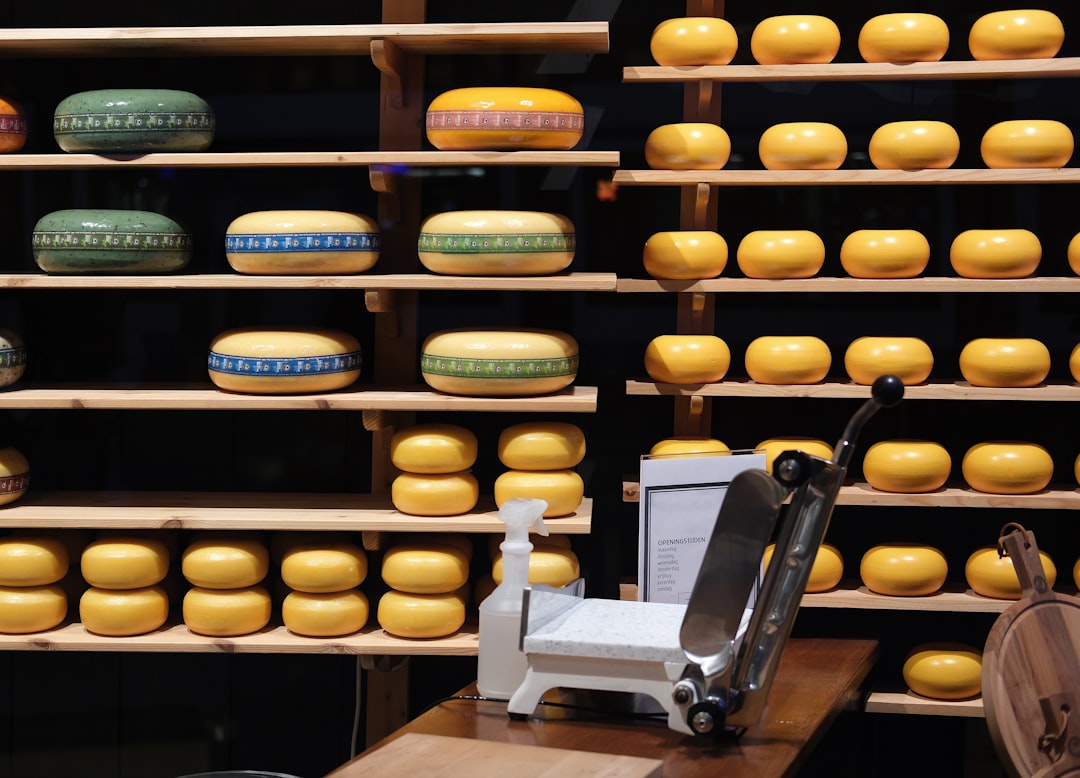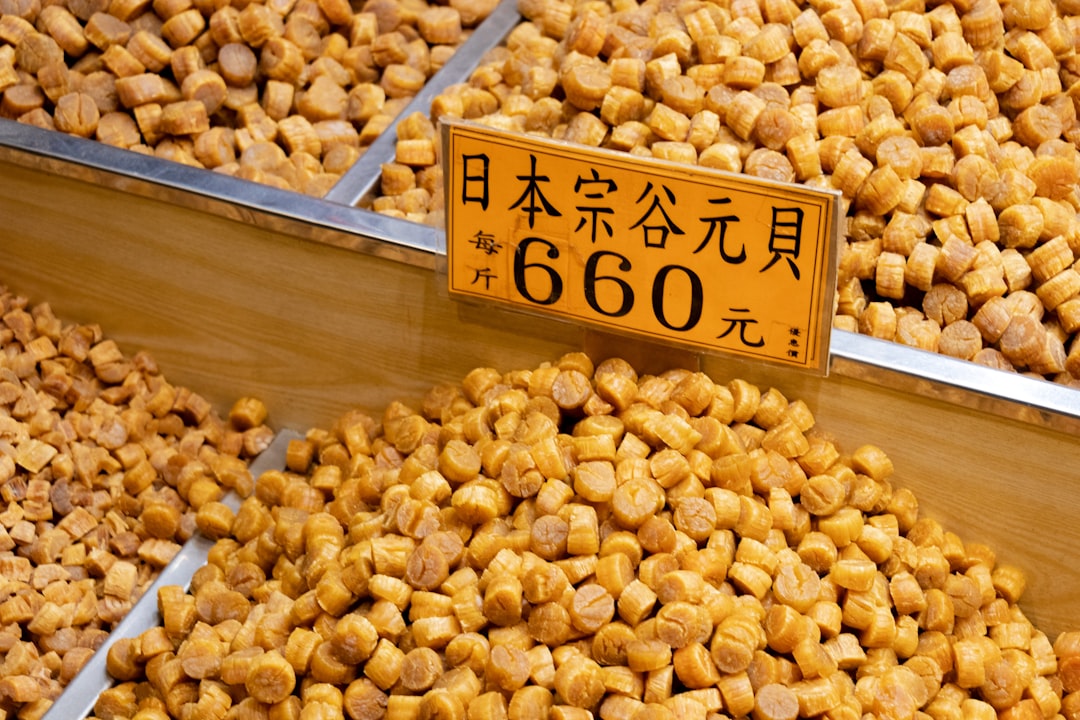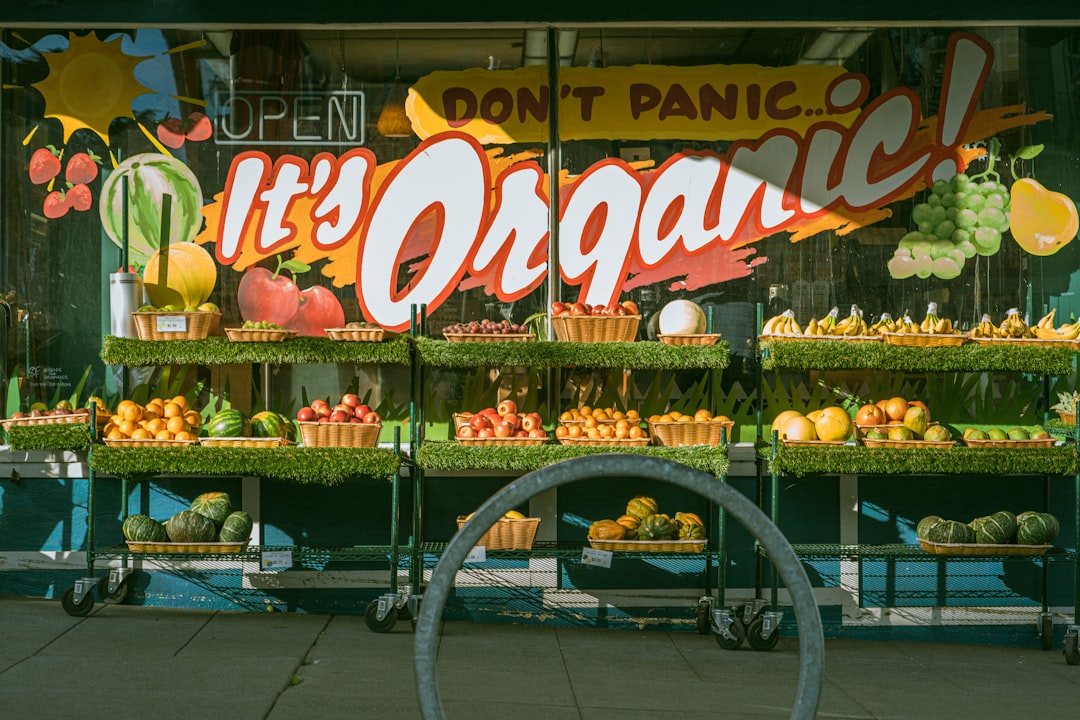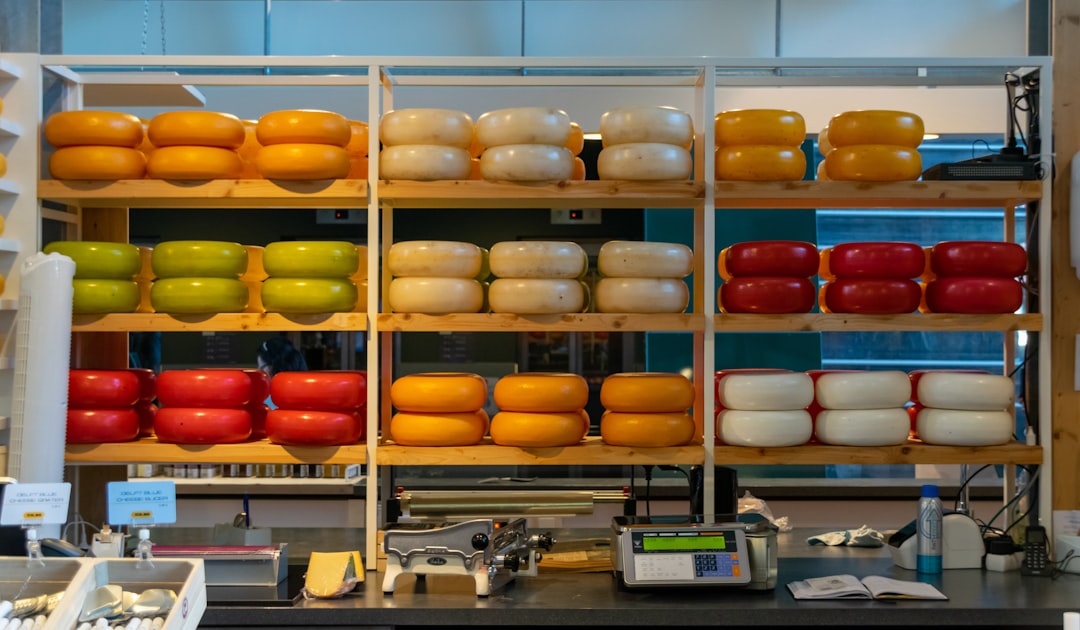

Engage prospects with a scan and streamline customer engagement with FREE QR code marketing tools by Sona – no strings attached!
Create a Free QR CodeFree consultation

No commitment

Engage prospects with a scan and streamline customer engagement with FREE QR code marketing tools by Sona – no strings attached!
Create a Free QR CodeFree consultation

No commitment
Artificial food manufacturers operate at the intersection of food science innovation and increasing consumer scrutiny. As the appetite for synthetic and lab-grown food alternatives grows, so do concerns around transparency, compliance, and personalized engagement at scale. One of the most persistent challenges is turning mandatory packaging into an effective point of education and trust, especially when traditional methods fail to surface the information or interaction consumers expect in real time.
QR codes have emerged as a practical, adaptable bridge between static packaging and dynamic digital content. Instead of relying on crowded labels or app downloads, manufacturers can now deliver real-time traceability, compliance documents, nutritional guides, and customer feedback tools directly via a single scan. This shift empowers companies to close information gaps, streamline regulatory updates, and open two-way channels for both education and engagement.
Approached holistically, QR code initiatives modernize labels and provide marketers and regulatory teams with measurable insights, from which products drive the most engagement to where prospective buyers drop off in their journey. This guide explains how artificial food manufacturers can use QR technology to transform product packaging from a regulatory requirement into a strategic asset for earning trust, accelerating feedback cycles, and optimizing every physical-to-digital touchpoint.

Artificial food manufacturers often face the challenge of consumers and partners missing critical product details or feedback channels, as traditional print inserts or static web links fail to deliver relevant, timely insights. This can result in overlooked regulatory issues or lost high-value contacts. QR codes address this by embedding digital experiences directly into packaging, making every interaction trackable and updatable.
By replacing analog materials like printed brochures, paper user manuals, and hard-to-find URLs with scannable codes, you reduce friction in the buyer and regulator experience. A single scan can reveal a product dossier, batch-specific certificates of analysis, allergen and nutritional data, sustainability metrics, and a contact path for support. This creates a living label that evolves as your formulations, processes, and regulations change.
Key steps include:
As you scale, a platform such as Sona QR centralizes code generation, dynamic link updates, and analytics. It also integrates with Sona.com to connect scans with broader attribution and CRM systems, unifying marketing and compliance workflows across products and geographies. Start creating QR codes for free.

For artificial food manufacturers, it is challenging to maintain visibility into who interacts with products and how, especially when many consumers and supply chain partners engage anonymously. This lack of insight can leave valuable leads and feedback uncollected and may even risk non-compliance if documentation or recall notices are missed. QR codes create a direct, low-friction bridge from physical packaging to digital experiences that inform, reassure, and convert.
QR codes also help teams iterate quickly in an environment where ingredient sourcing, labeling standards, and regulatory guidance can change with little notice. Dynamic codes allow you to publish updates once and propagate them across all products in market. This agility is essential for categories like cultivated meat, precision-fermented dairy, and novel plant-based analogues where new research and regulations surface often.
From packaging inserts to trade show flyers, QR codes create the connective tissue that artificial food brands need to build trust, demonstrate rigor, and convert curiosity into advocacy.

Choosing the right QR format ensures the scanner lands on the most useful destination for their context. Artificial food manufacturers rely on a handful of formats that cover regulatory compliance, education, and customer support, while keeping content agile as products evolve.
Web links and dynamic codes are often the backbone for living labels and multi-language support pages. Forms and surveys are ideal for post-purchase insights, quality monitoring, and partner onboarding. vCards and app downloads play supporting roles for B2B contacts and those who use specialized traceability tools. Selecting a mix of formats balances immediate needs with future flexibility.
In general, choose static codes for content that rarely changes, like a link to your corporate homepage. Use dynamic codes for anything that benefits from editing, experiment-driven optimization, or trackability, including product dossiers, multilingual pages, and seasonal promotions. With Sona QR, you can generate and manage all formats in one place and switch destinations without reprinting.

Missed opportunities often arise from a lack of visibility into where buyers, regulatory officers, or end-users interact with product information. QR codes let you capture engagement at the exact moment it occurs, transforming passive touchpoints into active, measurable interactions.
To uncover growth, map your offline surfaces and prioritize those with the highest exposure or highest stakes. Packaging panels, outserts, and shelf talkers are prime real estate. Trade show materials, shipper cartons, and direct mail inserts can also capture B2B interest that would otherwise remain anonymous.
Strategic code deployment helps manufacturers test positioning, optimize messages, and identify which channels drive business results. Each placement becomes an experiment that informs packaging design, marketing spend, and sales enablement.
Artificial food companies operate in categories that demand clarity around science, safety, and sustainability. QR codes enable direct, contextual communication for people with different needs: retail consumers, chefs, nutritionists, retailers, regulators, and investors. The most valuable use cases combine transparency with utility, making it easy to verify, learn, and engage.
Consider mapping use cases to stages of the lifecycle. Before purchase, codes drive education and sampling. At purchase, they provide verification and reassurance. After purchase, they support preparation, feedback, and advocacy. The following examples illustrate high-impact deployments.
Tracking these uses helps brands recognize patterns across regions and product lines. It also feeds an evidence base for marketing and regulatory teams to refine content, reduce confusion, and turn curiosity into confident adoption.
Manufacturers often struggle to retarget leads captured at packaging or events because interactions are not integrated with CRM and analytics. Every QR code scan, when tracked and connected, becomes a data-rich signal that can build segmented audiences for personalized follow-up. The key is to align codes, destinations, and tags with your funnel and personas.
For artificial food brands, consider at least four audience types: curious consumers evaluating novel foods, early adopters who want deep science, culinary professionals focused on performance in recipes, and B2B buyers prioritizing compliance and logistics. Each scan can assign tags that reflect these interests, then trigger relevant nurture paths. See intent retargeting.
With Sona QR, each code can carry structured metadata to your CRM, making it simple to segment by product, use case, geography, and scan context. You can then use Sona.com to correlate scans with web visits, ad interactions, and pipeline, creating accurate retargeting and reporting.
Disconnected campaigns lead to fragmented customer journeys and wasted spend. Integrating QR codes into a multichannel mix creates a consistent thread from offline discovery to online depth, while giving your team measurement capabilities across previously opaque channels. The objective is to orchestrate a single, coherent experience regardless of where interest starts.
For artificial food manufacturers, packaging is the anchor. However, there are influential touchpoints in specialty retail, food service, investor relations, and science communities. QR codes ensure all of these moments direct scanners to the most relevant digital experience, making it easier to compare products, verify claims, and engage with your team.
Centralized data from all channels provides a synchronized, data-rich view that reduces confusion from channel silos. Platforms like Sona QR standardize code creation and analytics, while Sona.com unifies scan activity with website, ad, and CRM data to show end-to-end impact.
A clear plan ensures your QR rollout is cohesive, measurable, and scalable. Start with a single product or region, then expand once you have proof of impact and a repeatable process. The steps below are designed for artificial food teams balancing compliance, education, and growth.
Even if you already use QR codes, revisit these steps to standardize your approach. Consistency in design, CTA language, and analytics tagging makes cross-product learning easier and increases your return on every scan.
Begin with a mission-critical goal tied to transparency or engagement. For example, enable instant verification of lab-grown meat traceability from every package in retail and food service. Define how success will be measured, such as share of buyers who verify origin, feedback completion rate, or average time spent on preparation guidance.
Choose a code format that matches your flexibility needs. Static codes are appropriate for destinations that rarely change, like your corporate sustainability hub. Dynamic codes are essential when regulations or campaigns shift, and when you need granular analytics by batch or region.
Design affects scannability, comprehension, and action. Keep codes large enough for in-store scanning, maintain strong contrast, and include a frame that clarifies the benefit. Add brand elements subtly so the code remains readable, and test under real lighting and packaging conditions.
Roll out your QR codes where they will reach the most relevant audience. For artificial foods, prioritize primary packaging, outer cartons for B2B handlers, trade show booths, and retailer shelf talkers. Stagger launches so you can measure impact by channel and make adjustments before scaling.
Set up analytics to capture scans by product, batch, region, and channel, then analyze downstream behavior like time on page, link clicks, and form completion. Use these insights to refine content, CTAs, and placements.
With Sona QR, you can track scans by time, location, and device, while Sona.com connects these interactions to web visits, ad clicks, and CRM opportunities. This makes it straightforward to understand what worked, what needs adjustment, and where to invest next.
Fragmented data from packaging campaigns can disrupt marketing attribution. QR code programs should be instrumented from the start to correlate scans with outcomes like feedback completion, list growth, and revenue. The goal is to move beyond vanity metrics and understand how QR engagement supports the entire journey. For strategy, see offline attribution.
Knowing someone scanned a code is useful, but without understanding how that engagement influenced progression, you are missing the full picture. Did the scan lead to a product verification, a sample request, a recipe download, or a conversation with a retailer? Traditional tools often stop at the scan. Modern stacks connect the dots from first scan to repeat purchase and advocacy.
Sona QR captures real-world engagement at the scan level. Sona.com turns that engagement into actionable insights, helping you connect scans to revenue and position QR codes as a cornerstone of your performance and compliance strategy.
Scaling success means codifying what works, pruning what does not, and empowering partners to support your QR-driven experiences. As you expand into new products and regions, consistency in design, CTAs, and analytics will ensure you can compare cohorts and make data-driven decisions.
Focus on the media that matter most for this vertical: primary packaging, outer cartons, shelf talkers, trade show materials, and direct mail to retailers. Always make the next step clear and compelling so scanners know the value they will receive.
Consider creative deployments specific to artificial foods. Place QR stickers on sample packs for chefs with links to yield tests and plate cost calculators, or add codes to invoices that let retailers rate fulfillment quality and request updated marketing assets.

Artificial food manufacturers are already using QR codes to merge compliance, education, and growth. While strategies vary by product and region, the most effective campaigns share two traits: clear user value and tight integration with analytics. The examples below illustrate how to combine both.
Use these patterns as starting points, then adapt them to your products, audiences, and channels. The goal is not just to inform, but to create a feedback loop that improves the product, messaging, and customer experience over time.
These examples show how QR codes bridge compliance and marketing goals while keeping the experience simple for the end user. The common thread is delivering value in the moment: verification when trust matters, education when curiosity is high, and support when help is needed.
As with any packaging or marketing technology, the difference between average and exceptional results lies in execution. Experts stress the importance of durability, context, and cross-functional collaboration. Codes must scan well in real environments, CTAs must be specific, and compliance teams should be involved early to keep everything accurate and audit-ready.
Avoid cluttered labels with multiple competing codes or vague calls to action. If people are unsure why to scan, they will not. Prioritize one compelling offer per panel and make sure the landing content fulfills the promise on the label.
Experts also recommend establishing a content governance model. Assign owners for each destination page, set refresh cadences, and agree on a protocol for urgent updates such as recalls or regulatory changes. This prevents outdated or conflicting information from undermining trust.
QR codes have become pivotal for artificial food manufacturers striving to transform conventional packaging into dynamic, high-value engagement and compliance tools. By thoughtfully deploying QR initiatives, companies can address frequent industry concerns such as missed prospect tracking, incomplete feedback capture, and fragmented audience insights while cultivating transparency and building consumer trust.
By weaving QR codes into both operational and marketing strategies, and ensuring scan data feeds into broader CRM and analytics systems, artificial food manufacturers position themselves to meet and exceed the demands of a marketplace defined by scrutiny, speed, and continual innovation. Each scan becomes an opportunity not just for compliance, but for learning, optimizing, and expanding meaningful relationships down the supply chain and across the customer journey.
Now is the time to harness QR technology to close data gaps, unlock new growth opportunities, and turn every product deployment into a digitally enabled brand asset. Whether you are launching your first dynamic code on packaging or standardizing a global QR framework, platforms like Sona QR and Sona.com make it easier to generate codes, manage destinations, integrate data, and connect offline interest to measurable outcomes.
QR codes have revolutionized the artificial food manufacturing industry by transforming packaging into interactive, data-driven engagement platforms. Beyond simply providing product information, these codes enable manufacturers to enhance traceability, ensure authenticity, and create personalized customer experiences that drive brand loyalty and trust. Imagine being able to instantly update nutritional details, launch targeted promotions, or track consumer interactions—all through a simple scan on your product’s packaging.
With Sona QR, artificial food manufacturers can effortlessly create dynamic, trackable QR codes that adapt in real time, eliminating the need for costly reprints and empowering you to connect each scan directly to actionable insights and increased revenue. From improving supply chain transparency to boosting customer acquisition and retention, Sona QR equips you with the tools to elevate your packaging into a powerful marketing asset.
Start for free with Sona QR today and turn every package into a gateway for engagement, growth, and measurable success.
QR codes transform packaging from static information into dynamic digital experiences that deliver real-time traceability, compliance documents, nutritional guides, and enable two-way customer engagement.
QR codes allow manufacturers to share batch-specific data, safety testing, ingredient provenance, and regulatory updates efficiently, improving transparency and compliance without reprinting labels.
Platforms like Sona QR and Sona.com lead in QR code generation, dynamic link management, analytics integration, and connecting scan data with CRM and marketing systems.
The article does not specifically address the environmental impacts of artificial food manufacturing.
QR codes help communicate safety testing results, allergen information, and recall alerts directly to consumers and regulators, supporting informed and safe consumption.
Artificial food manufacturers use QR codes to collect real-time consumer feedback on taste, texture, and preparation, enabling continuous improvement and transparency about nutritional profiles.
By deploying QR codes that link to dynamic product dossiers, certificates, nutritional data, and customer support, manufacturers provide accessible, up-to-date information that fosters trust.
Key steps include defining use cases and success metrics, choosing static or dynamic QR codes, designing with clear CTAs, deploying on high-impact channels, and tracking scan data for optimization.
QR codes enable instant access to updated compliance certificates, batch-specific safety information, and recall notices, reducing risks and streamlining audits without reprinting packaging.
Common formats include web links for product pages, forms and surveys for feedback, SMS or email for alerts, vCards for contacts, app downloads for traceability tools, and dynamic codes for flexible content.
Ideal placements include primary packaging, outer cartons, shelf talkers, trade show materials, direct mail inserts, point-of-sale displays, and cold-chain logistics labels.
By tracking scan data with batch, region, and user intent tags, manufacturers can segment audiences for personalized follow-ups and integrate data with CRM and advertising platforms.
Avoid cluttered labels with multiple codes, vague CTAs, poor code durability, and lack of early compliance collaboration to ensure scannability, clarity, and regulatory accuracy.
QR codes unify offline and online touchpoints, enabling consistent messaging, measurable engagement, and seamless integration with digital campaigns across packaging, events, social media, and retail.
Examples include dynamic traceability codes for cultivated meat, QR surveys at trade shows for synthetic dairy, prep videos for lab-grown seafood, and recall-ready packaging for plant-based analogues.
Manufacturers capture scan details like time, location, device, and batch, link scans to CRM and ad data, measure downstream actions, and use dashboards to optimize campaigns and prove ROI.
Standardize design and CTAs, use unique batch-level codes, add tracking parameters, educate partners to promote scanning, and automate follow-ups to maintain consistency and maximize impact.
Use Sona QR's trackable codes to improve customer acquisition and engagement today.
Create Your FREE Trackable QR Code in SecondsJoin results-focused teams combining Sona Platform automation with advanced Google Ads strategies to scale lead generation

Connect your existing CRM

Free Account Enrichment

No setup fees
No commitment required

Free consultation

Get a custom Google Ads roadmap for your business






Launch campaigns that generate qualified leads in 30 days or less.
